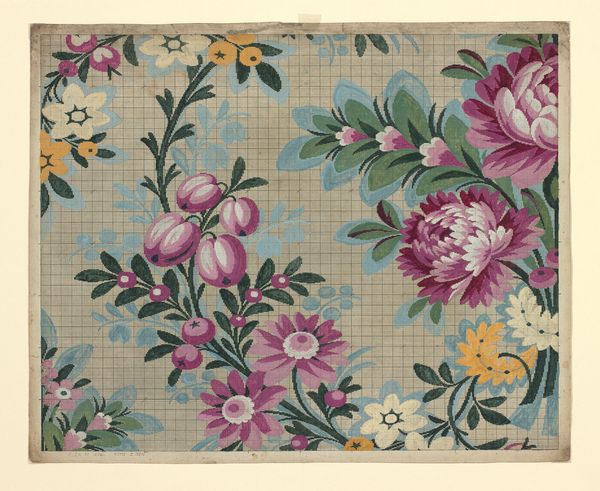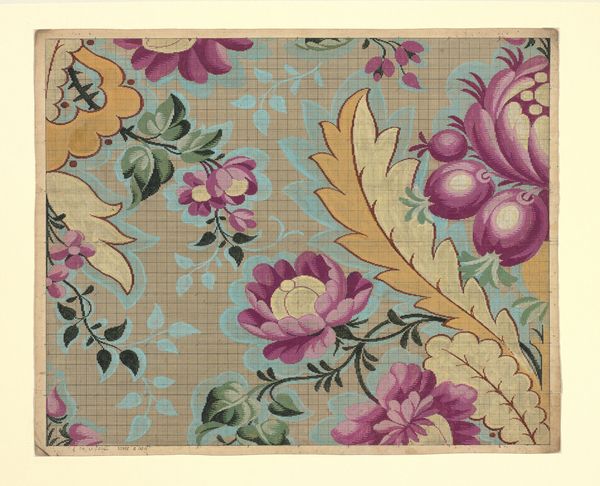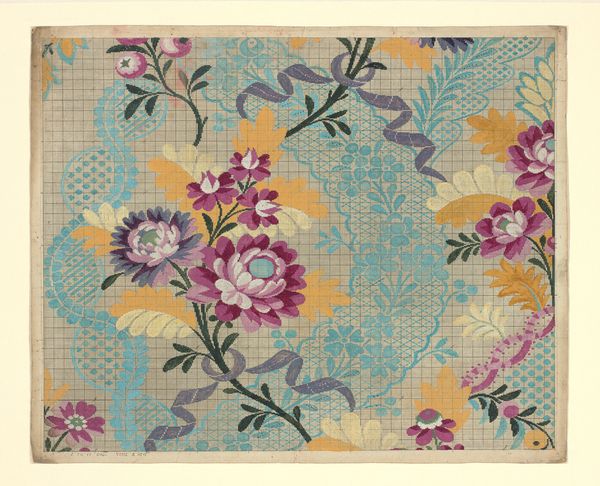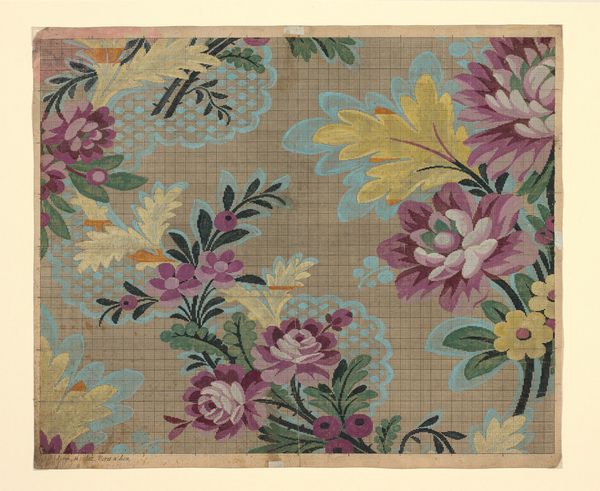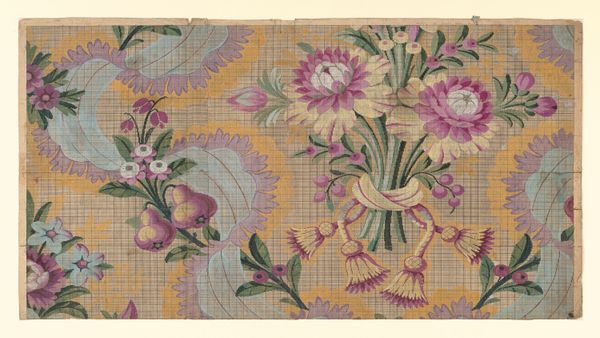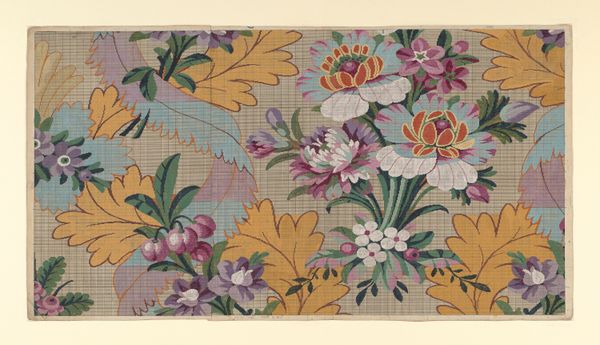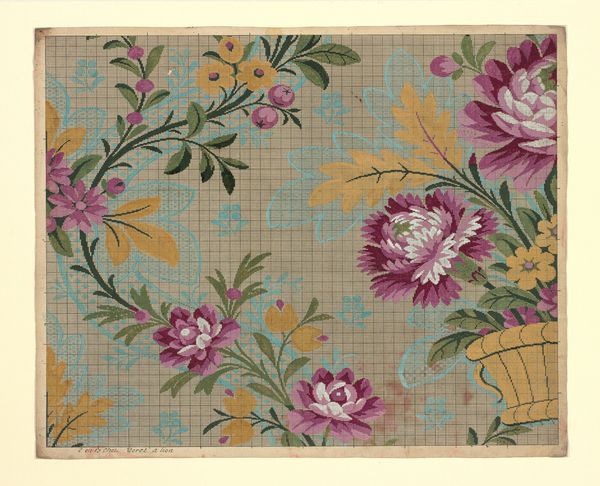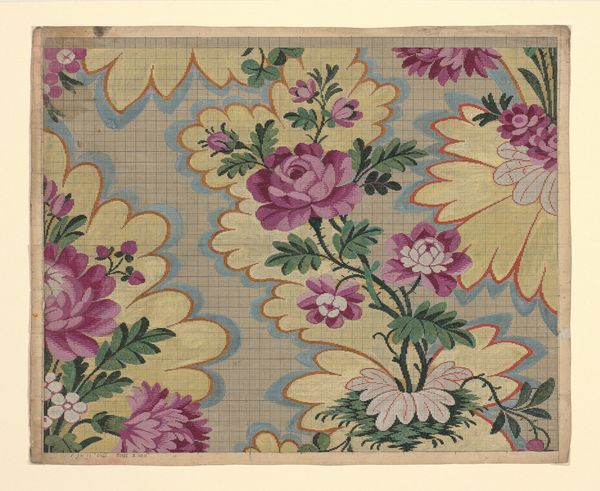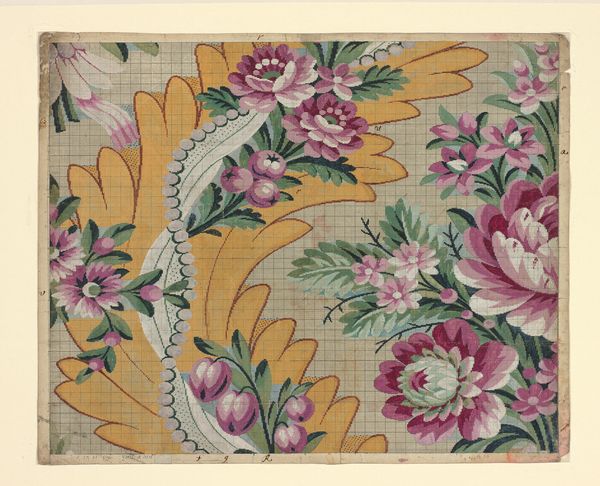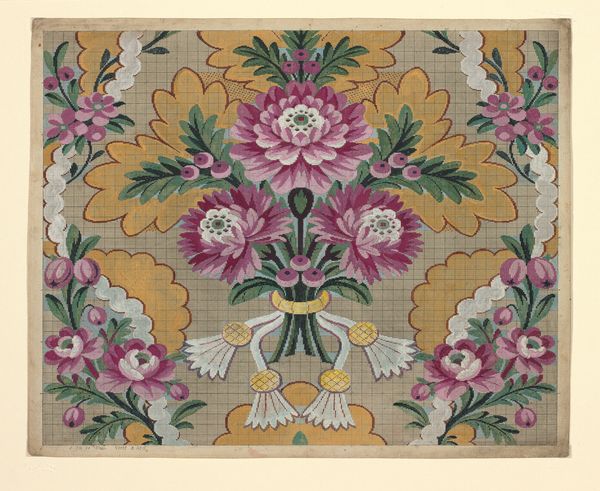
Dimensions: 55.3 × 49.25 cm (21 3/4 × 19 3/8 in.)
Copyright: Public Domain
Curator: Let’s turn our attention to "Mise-en-carte," or "Point-paper," a textile design by Germain Frères, created around 1785. What are your first impressions of the work? Editor: Well, initially it strikes me as rather restrained for Rococo. The colour palette is subdued, but also, fascinatingly, constrained by that visible grid. It's both beautiful and obviously technical. Curator: Precisely! The "mise-en-carte" was indeed a crucial tool, especially for the complex patterns characteristic of silk weaving during that period. It’s effectively a blueprint. The design, meticulously planned on this grid of paper, directly translated into the instructions for operating the loom. Each square represents a single warp thread. Editor: So the very aesthetic, the visual appeal, is dictated and defined by a production process. And look at that gridded paper. It is like the scaffolding necessary for material realization, yet, it is left visible within the final presentation as a critical, integral layer of the art. Curator: Indeed. Consider the symbolism. Flowers, particularly those elaborate blossoms like the peony front and center, represent prosperity and abundance, hugely important during the Rococo era of ornamentation. It captures an essential Rococo tension—ornate and lavish, yet meticulously planned and controlled. Editor: Right, we cannot deny the means through which these opulent visual affects materialize. It speaks to the division of labor and the skilled artisans required to produce textiles of such quality and scale. Curator: And the grid itself offers an interesting counterpoint. Its rigid geometry provides structure against the organic, free-flowing forms of the floral pattern, which further underscores its inherent control. This allows for a dynamic dialogue between form and intention. Editor: It almost exposes its method to the observer, offering both surface pleasure, in its aesthetic appeal, and insight into the process, which ultimately demystifies art production in the period. The work blurs boundaries by foregrounding art-making as labor. Curator: In summary, "Mise-en-carte" grants us insight not only into Rococo aesthetics but also the mechanics behind creating luxury textiles. Editor: I think it provides the framework that urges us to investigate both the conceptual and physical labor embedded within each thread, each detail.
Comments
No comments
Be the first to comment and join the conversation on the ultimate creative platform.
